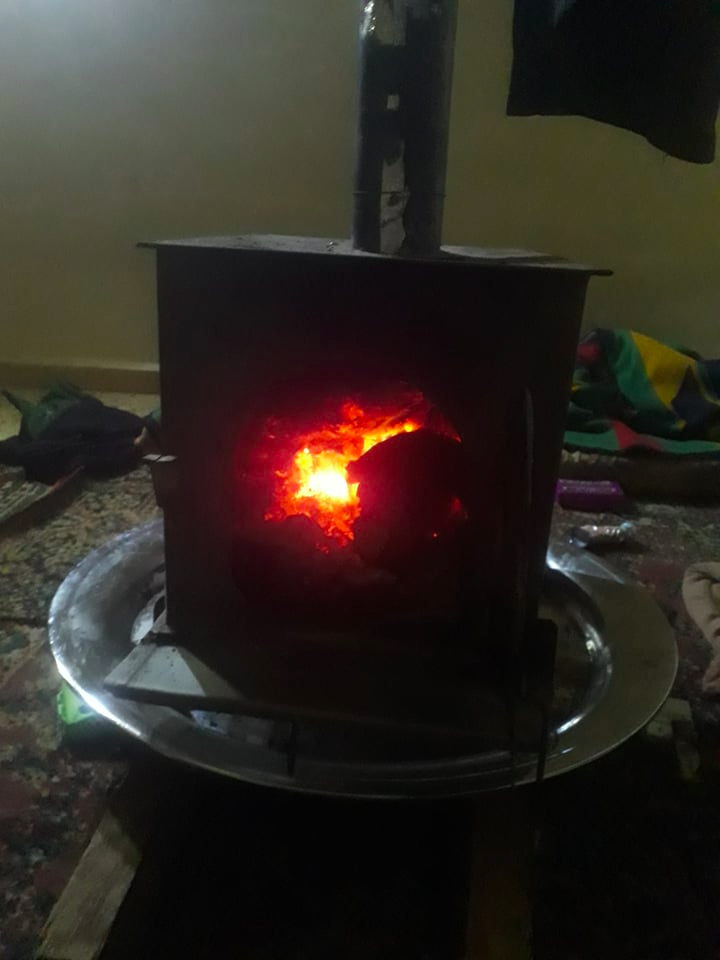As War Winds Down, Syrians Contend with Frigid Temperatures and Fuel Shortages
By James Bowker
Heating fuel is a basic necessity to live through the winter in Syria, and in eight years of conflict, difficulty in sourcing fuel has emerged as one of the war’s more dire, if less visible, impacts on ordinary citizens.
Syrians are struggling to stay warm amid acute fuel shortages. Over the course of the eight-year conflict, fending off the winter cold has become part of the rhythm of daily life as inflation, scarcity, and fighting have made it increasingly difficult to secure various forms of fuel, and the 2018-2019 winter has been especially difficult. Electrical grids throughout the country shut off frequently and in many places are not functioning, while the price of diesel, commonly used to heat homes, is increasing. The liquified petroleum gas (LPG) canisters used to power stoves throughout the Middle East are a scarce commodity: in one video that made the rounds on social media, a man dresses an LPG canister he purchased as a bride.
Idlib City has some of the highest prices for diesel across the country, which is imported into the northwest provincial capital across lines of armed group control from oil fields in Syria’s east. At its peak in mid-January, the price of diesel in Idlib had increased by 45% since November 2018, from 275 SP to 400 SP. This is too expensive for residents of the province to afford, many of whom are displaced, so people rely on burning whatever is at hand, including materials that produce dangerous fumes, says a Navanti researcher based in Idlib province.
“Kids [here] are suffering from respiratory illnesses, including chronic coughing because of burning firewood and clothing,” she said.

A wood stove for heating in Idlib province. Source: Navanti
Farther east in Manbij, market prices for diesel are lower than in Idlib but remain nearly twice as expensive as they were in November 2018, at 150 SYP per liter. In al-Raqqa city, the former capital of the Islamic State’s self-styled caliphate, prices witnessed a marked increase this winter, reaching 125 SYP compared to the November average of 70 SYP. These increases outstrip changes for most other commodity prices, which have fluctuated over the last five months with few enduring hikes.
In government-controlled areas, residents face shortages in both diesel and LPG canisters. Gas stations remain out of service or contend with long lines, while the price of an LPG canister has grown dramatically, when it is available at all. An LPG now costs between 8,000-9,000 SYP (approximately 18 USD) whereas the official price was set at 2,500 SYP in 2016. These problems are mitigated by the availability of electricity in some government-controlled areas.
What’s behind the marked price increase?
Syrian government news outlets and officials have blamed U.S. sanctions for fuel shortages. In response to the government’s crackdown on protests, the US instated sanctions on Syria in 2011, which prohibited “U.S. persons from involvement in transactions involving Syrian petroleum or petroleum products.” These sanctions were widened in November 2018 in order to more specifically target the sale of Iranian oil products to Syria. In early January 2019, the Syrian Minister for Petroleum disclosed that 43,000 tons of LPG scheduled to be delivered from Russia and Iran had not reached Syria, implying this was a result of the sanctions.
But the fuel crisis is exacerbated by the policies of the Syrian government itself. Regime-connected figures and militias get priority access to the limited amount of fuel available. The government relies on war-profiteering middlemen to procure and transport oil, driving up prices. Additionally, in many cities, the government sets aside fuel to ensure supplies for soldiers and their families.
In Idlib province, residents complain about local rebel local fighters hoarding wood and fuel supplies, adding one more bullet to their list of grievances with armed groups and governance. In Al-Raqqa city, high fuel prices have driven speculation that Kurdish-led Syrian Democratic Forces (SDF) would rather profit off of residents than share or subsidize its resources—since expelling ISIS, the SDF has come to control the oil fields responsible for most of Syria’ domestic capacity. There are also reports that the SDF derives revenue from selling portions of the crude it extracts to the Syrian government via intermediaries. Disputes over oil equity have driven tensions with populations living around oil fields, who have been left without a traditional source of livelihood: They demand employment on the oil-fields, a share of oil revenues, or both, which the SDF appears unwilling to give in many cases.
Syria’s fuel problems show few signs of abating. At the end of 2018 the Syrian government was significantly short of its domestic oil and gas production goals and relied on Iranian credit to import Iranian fuel, with demand for oil products increasing. The latest American sanctions targeting the Iranian energy sector will further impede fuel access, as will uncertainty surrounding the future of Syria’s northeast, where Syrian oil-fields are concentrated, in the shadow of an American withdrawal. As the violence of the war grinds to a halt, the political and material impacts of the eight-year conflict will leave Syrians contending with shortages and hardship for years to come.
The fuel prices presented in this article are drawn from market price data collected by Navanti.

